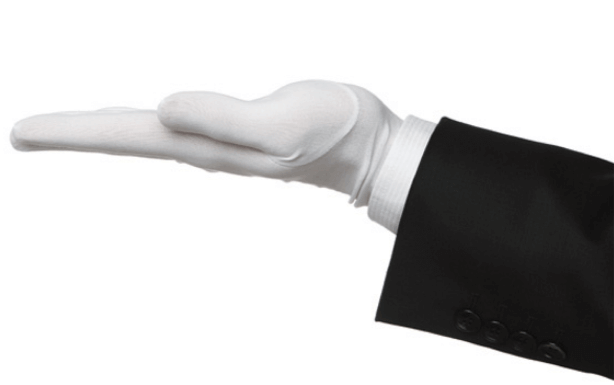
This straightforward formula provides a clear picture of a company’s non-manufacturing expenses. Reducing monthly rent expenses by $1,000 would increase net income by $12,000 per year. Careful monitoring of period costs is key for businesses to control operating budgets. These costs remain relatively constant each month, regardless of production volume. Indirect Allocation involves distributing Period Costs to cost objects based on predetermined allocation bases. These allocation bases may include factors such as labor hours, machine hours, square footage, or production volume.

Product vs. Period Cost: Key Differences and Financial Impact
As you can see there is a heavy focus on financial modeling, finance, Excel, business valuation, budgeting/forecasting, PowerPoint presentations, accounting and business strategy. Compare current account and saving account options to find the best fit for your financial needs, goals, and lifestyle. While the basic service charge remains fixed, the overall utility bill can increase or decrease based on consumption. Depreciation is a non-cash expense that represents the systematic allocation of the cost of tangible assets over their useful lives.
- Access and download collection of free Templates to help power your productivity and performance.
- On the other hand, costs of goods sold related to product costs are expensed on the income statement when the inventory is sold.
- For example, reducing monthly rent expenses by $1,000 would increase net income by $12,000 per year.
- These allocation bases may include factors such as labor hours, machine hours, square footage, or production volume.
- Properly classifying costs is key for accurate financial statements, and understanding the different roles of Period and Product Costs is crucial for financial reporting.
Optimizing Accounting Reserve Account Management Strategies

Administrative salaries are another example of indirect costs, as they are salaries of administrative staff who support multiple departments or functions. A manufacturer may pay $5,000 per month in rent for its factory, which is a period cost. The rent expense is what are period costs recorded on the income statement each month, regardless of how many units are produced. A company’s ability to manage period costs effectively can have a significant impact on its overall profitability.
#2 – Usage of Period Expense in Inventory Valuation

Direct Allocation is a method of assigning Period Costs directly to the specific cost object based on a clear cause-and-effect relationship. This method is straightforward and suitable for costs that can be easily traced to a single cost object. Understanding Period Costs is essential for evaluating a company’s performance and making informed decisions.
- For example, the salary of a chief financial officer or the upkeep of corporate headquarters falls under this category.
- By understanding the difference between product costs and period costs, you can better manage your business’s finances and make informed decisions about how to allocate resources.
- Marketing expenses can be categorized into several types, including digital marketing, print advertising, public relations, branding and design, and market research.
- Weighted-average costing mixes current period expenses with the costs from prior periods in the beginning inventory.
Indirect Allocation
- Proper classification of costs is essential for businesses to improve profitability.
- By accurately forecasting Period Costs, businesses can develop realistic budgets and allocate resources effectively.
- In industries like pharmaceuticals and technology, R&D can represent a significant portion of total period costs, emphasizing the role of innovation.
- Period Costs are typically classified as selling, general, and administrative expenses (SG&A) on the income statement.
- These are deducted from gross profit to calculate operating income, a critical metric for evaluating a company’s cost structure.
- Proper allocation of indirect costs is essential to ensure that costs are allocated fairly and accurately.
The Management accountant has to carefully evaluate the time cost and check whether the same will form part of an income statement. Expert guide to accounting reserve account management & fund allocation strategies for businesses, optimizing financial efficiency & growth. Examples of assets AI in Accounting subject to depreciation include Property, Plant, and Equipment (PP&E), such as buildings, machinery, equipment, vehicles, and furniture used in business operations. Direct Labor, Direct Materials, and Sales Commissions are examples of costs that can be directly allocated.
- While certain advertising expenses, such as retainer fees for marketing agencies, may be fixed, additional advertising spending may vary based on promotional campaigns and initiatives.
- This means that period costs don’t change with the amount of goods produced or sold.
- Examples of period costs include salaries, rent, utilities, and advertising expenses.
- This method is straightforward and suitable for costs that can be easily traced to a single cost object.
- Period costs are costs that cannot be capitalized on a company’s balance sheet.
- Direct Labor, Direct Materials, and Sales Commissions are examples of costs that can be directly allocated.
- Period costs are expenses related to business operations during an accounting period, recorded as operating expenses on the income statement.

Fixed costs remain constant for a given tenure, irrespective of the level of output. Generally, fixed cost consists of fixed production overhead and Administration Overhead. The fixed cost per unit of output will vary inversely with changes in output level. Fixed cost is treated as a time cost and unearned revenue charged to the Profit and Loss Account. To quickly identify if a cost is a period cost or product cost, ask the question, “Is the cost directly or indirectly related to the production of products?

Examples of Period Costs include salaries and wages, rent, utilities, marketing expenses, and depreciation. In FIFO costing, the costs in the beginning inventory are transferred out in a lump sum. FIFO costing does not mix costs from prior tenure (in beginning inventory) with a current period expense. Period costs are costs that cannot be capitalized on a company’s balance sheet.
